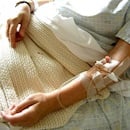
Breastfeeding: An Update for Nurses
Since 2011, August has been designated as National Breastfeeding Awareness Month. The campaign is supported by the Office on Women’s Health, U.S. Department of Health and Human Services (2015), which promotes advocacy and information to improve infant health and nutrition through breastfeeding. This year’s campaign has a new twist, incorporating the power of social media to spread the word. The United States Breastfeeding Committee (USBC) will invite breastfeeding coalitions, member/partner organizations, and individual supporters to participate in a variety of online discussions to raise awareness, and to advocate for policy and practice changes that breastfeeding families need (USBC, 2015).
An additional annual awareness event is held the first week of August with World Breastfeeding Week, coordinated by the World Alliance for Breastfeeding Action (WABA). The theme for the 2015 campaign revisits the Mother-Friendly Workplace Initiative brought to light in 1993. WABA acknowledges the achievements made in the 22 years of global action designed to support working women who choose to breastfeed. In addition to stronger maternity rights, numerous advancements in improving national laws and practices have also been achieved on the international stage. In the U.S., workplace practices have increasingly recognized a woman’s right to breastfeed; some companies that encourage the practice have been recognized and awarded for doing so (WABA, 2015).
According to the Centers for Disease Control and Prevention (CDC), the overall breastfeeding initiation rate is currently at 79.2%, but drops to 49.4% at six months and 26.7% at 12 months (CDC, 2014). Through the Healthy People 2020 Objectives for the Nation, the CDC’s goal is to have 81.9% of all infants breastfeeding by 2020. Their second stated goal: That 60.6% of infants will continue to breastfeed up to the age of six months (CDC, 2011).
The American Academy of Pediatrics (AAP) encourages women to breastfeed their infants for the first six months, and offer breast milk for at least the first year of life (AAP, 2014). Evidence demonstrates that breastfeeding protects infants against respiratory tract infections, otitis media, urinary tract infections, diarrhea and necrotizing enterocolitis, diabetes, lymphoma, leukemia and Hodgkin’s disease, allergies, sudden infant death syndrome (SIDS), obesity, and celiac disease (AAP, 2014). Maternal benefits include decreased risk of breast and ovarian cancers, less postpartum bleeding, and a quicker return to pre-pregnancy weight (AAP, 2014).
Nurses are strategic advocates for breastfeeding. As nurses, it is important to ensure that you have the knowledge to support breastfeeding mothers, including lactation practices and understanding of the importance of breast milk. Early skin-to-skin contact and breastfeeding are a good start – for baby and for Mom. Lactation consultant referrals are important when there are identified issues with breastfeeding. Continued support in the community after birth will also help mothers continue to breastfeed (CDC, n.d.).
For more information on how to support breastfeeding, check out these RN.com courses: “A Nurse's Guide to Managing Common Breastfeeding Challenges,” “Lactation Review: Breastfeeding Basics,” and “The Baby-Friendly Hospital Initiative: What It Means For You and Your Facility.”
Biography:
Kim Maryniak has over 26 years of nursing experience in medical/surgical, psychiatry, pediatrics, and neonatal intensive care nursing. She has been a staff nurse, charge nurse, educator, instructor, manager, and nursing director. Kim is certified in Neonatal Intensive Care Nursing and has been active in both the National Association of Neonatal Nurses and the American Nurses Association. Kim’s current and previous roles have included professional development and practice, research utilization, nursing peer review and advancement, education, infection control, nursing operations, and quality and process improvement.
References:
American Academy of Pediatrics [AAP]. (2014). Policy statement: Breastfeeding and the use of human milk. Pediatrics, 129(3), e.827- e84.1
Centers for Disease Control & Prevention [CDC]. (n.d.). How nurses can help.
Centers for Disease Control & Prevention [CDC]. (2011). Healthy People 2020 objectives for the nation.
Centers for Disease Control & Prevention [CDC]. (2014). Breastfeeding report card, 2014.
United States Breastfeeding Committee [USBC]. (2015). National Breastfeeding Month 2015.
U.S. Department of Health and Human Services [HHS]. Office on Women’s Health. (2015). Breastfeeding.
World Alliance for Breastfeeding Action [WABA]. (2015). World breastfeeding week: 1-7 August 2015. Retrieved from here.




